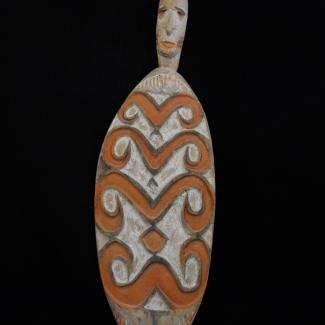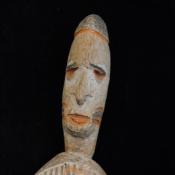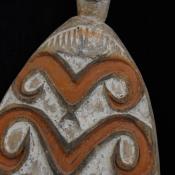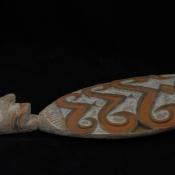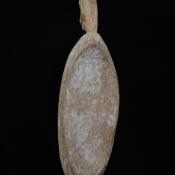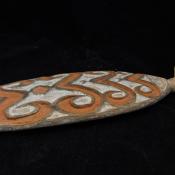This is an oblong wooden sago platter carved by the Asmat peoples of Papua New Guinea. It features a symmetrical geometric design on the front curved surface, which is painted in white, red, and black. The top and bottom of the platter are decorated with a series of vertical slash marks pointed inwards from the edges. The handle of the platter is carved in the shape of a large male head. It features an enormous nose, sunken eyes, and small mouth. The top of the head is painted black and rimmed by a red band. The mouth and eyes are painted red, and the brow is painted black. On each cheek are three horizontal slash marks, each painted red or black. The underside of the piece shows remnants of white pigment which has now since faded.
White pigments are known as mbi. They are created by crushing and burning the shells of mussels found in the rivers of the region. Red pigments are wasah, and are made from mixing different colored clays in river beds at upstream village communities. Colors are believed to hold mystic power in Asmat culture, and are often associated with images of strength and power.
Platters such as this are carved with the purpose of serving roasted sago balls during normal and ceremonial meals. They are carved in the likeness of humans to emphasize the Asmat peoples’ spiritual and cultural connection to the land, particularly the sago tree, which brings life and fertility. Platters were also used for the consumption of human brains until the banning of headhunting raids by missionaries in the late twentieth century. After this, the ceremonial food of choice became the Capricorn beetle, the larvae of which strongly resemble human brain matter.
Colors: White, Red, Brown, Black

